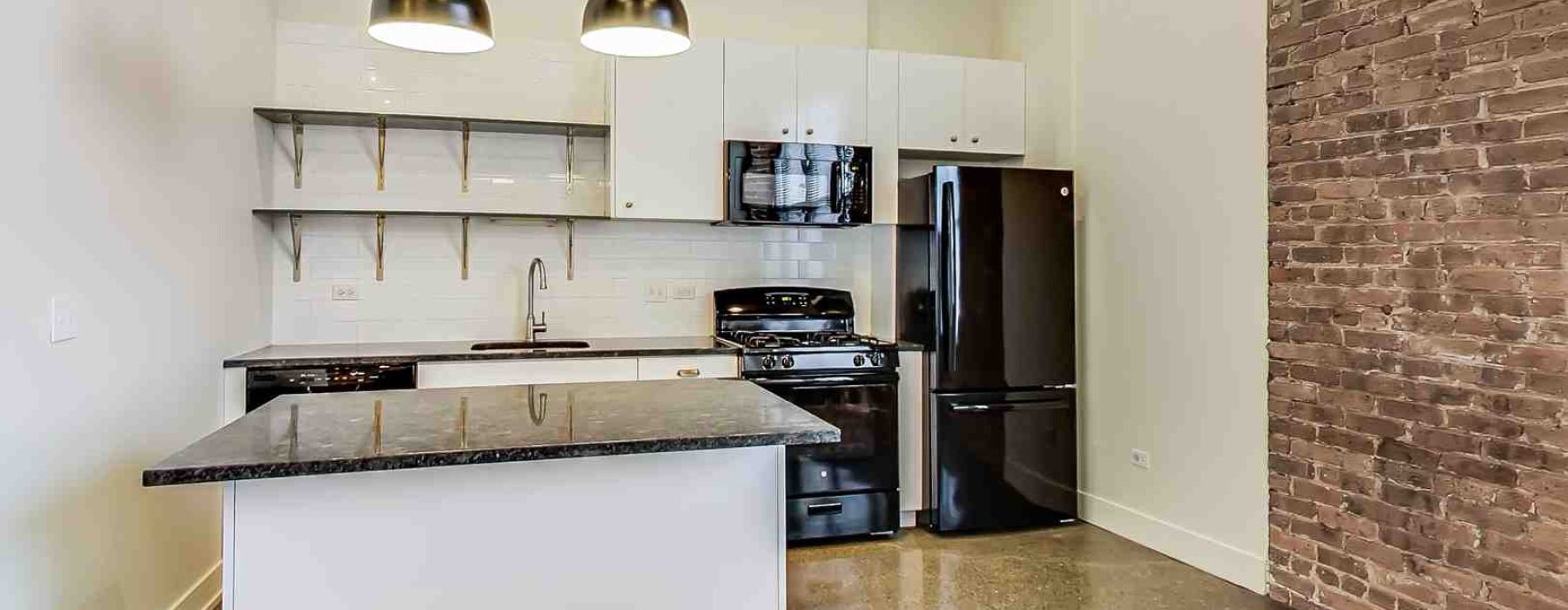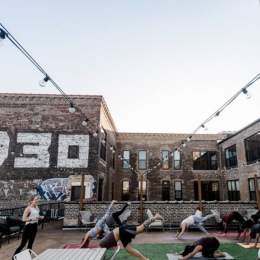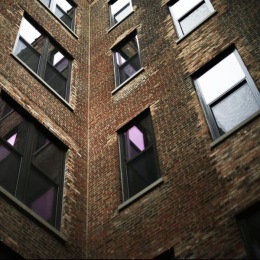Studio Apartment Living: Features, Benefits, and Real Reviews
Why Studio Apartment Benefits Make Urban Living More Accessible
Studio apartment benefits include simplified living, easier maintenance, and the ability to live in prime urban locations. These compact spaces, typically 300-600 square feet, combine the living room, bedroom, and kitchen into one open area, with only the bathroom separated by a door.
Key Studio Apartment Benefits:
- Lower maintenance - Less space means quicker cleaning and fewer rooms to maintain.
- Improved creativity - Open layouts encourage innovative furniture arrangements.
- Complete privacy - Living without roommates means total control over the space.
- Urban convenience - Studios are often located in vibrant city centers near transit and amenities.
- Minimalist lifestyle - Limited space encourages decluttering and intentional living.
- Community engagement - Smaller living spaces motivate residents to explore their neighborhoods.
- Energy efficiency - Compact spaces have a smaller environmental footprint due to reduced energy needs.
Living in a studio apartment appeals to anyone who values simplicity over space. The open floor plan offers flexibility that traditional apartments cannot match. Without walls dividing rooms, residents can creatively arrange furniture and adapt their space for different activities, from a home office during the day to an entertainment area in the evening.

What Defines a Studio Apartment?
Imagine an efficient living space where everything is thoughtfully arranged in one bright, welcoming area. That's the essence of a studio apartment. It's a single room living concept, designed with an open floor plan where the bedroom, living room, and kitchen all share the same space. The only separate room is the private bathroom, making it a perfectly self-contained unit.
This open-concept design is the signature of studio living, offering a unique blend of efficiency and flexibility. These spaces are sometimes called "efficiency apartments," but the core idea remains the same: a compact, integrated living area suited for a modern lifestyle. This layout encourages a thoughtful approach to how the home is used, making every square foot count. For a clearer picture, think of it as a single open space. To see what's available, View All Floorplans at The Otis Apartments by FLATS.

The Key Differences: Studio vs. One-Bedroom
The biggest difference between a studio and a one-bedroom apartment is a separating wall. In a one-bedroom, a wall creates a distinct, enclosed bedroom. In a studio, these areas flow together seamlessly.
This fundamental layout distinction influences several aspects of daily life:
- Wall Separation: A one-bedroom has a wall dividing the bedroom, while studios skip internal walls for a more expansive feel.
- Privacy Levels: A studio offers complete privacy for a single resident, but a one-bedroom provides more internal separation for guests.
- Square Footage: Studios often range from 300 to 600 square feet, while one-bedroom apartments are typically larger, usually 500 to 700 square feet or more.
- Functional Zones: In a studio, creating distinct functional zones requires creative furniture placement, whereas these zones are architecturally defined in a one-bedroom.
Here’s a quick look at how these two apartment types compare:
| Feature | Studio Apartment | One-Bedroom Apartment |
|---|---|---|
| Layout | Single open space for living, sleeping, kitchen | Separate, enclosed bedroom; distinct living/kitchen |
| Privacy | Open, less internal separation | More defined separation and privacy |
| Typical Size | 300-600 sq ft | 500-700+ sq ft |
| Furnishing Needs | Suited for multi-functional, space-saving pieces | Accommodates more traditional furniture sets |
| Hosting Guests | Requires creative staging in a shared space | Easier to entertain with separate living area |
| Work-from-Home | Integrated workspace within main living area | Dedicated room or separate area for office |
Common Studio Layouts
Even though studios are all about open living, they come in several clever configurations:
- Alcove Studio: This design features a small nook or indentation, ideal for a bed, that is slightly set apart from the main living area. It offers a subtle sense of separation for a sleeping zone without needing a full wall.
- L-Shaped Studio: This layout forms an 'L' shape, where the natural bend provides a division between the sleeping and living areas, creating more visual separation and better flow.
- Convertible Studio: Designed for flexibility, this studio has a larger main room or a designated area that can be divided with a temporary wall or furniture to create a separate bedroom.
- Loft-Style Studio: Typically found in converted industrial buildings, these studios feature high ceilings, large windows, and an open, airy feel. Some may include a mezzanine level for sleeping.
- Standard Rectangle/Square Studio: The most common layout is a single rectangular or square room. The kitchen is usually along one wall and the bathroom is off to the side, offering maximum flexibility for furniture arrangement.
It's worth noting that studios in newer buildings often come with improved features like larger closets or more efficient kitchen designs, making the most of every square foot.
The Minimalist Appeal: Simplifying Your Lifestyle and Maintenance
A significant studio apartment benefit is how it naturally encourages a simpler, more intentional way of living. Living in a smaller, open space promotes decluttering and focusing on what truly matters, leading to a sense of freedom that comes from owning just what is needed.
This "less is more" mindset also applies to daily chores. A smaller home means less time and effort spent on cleaning and upkeep. Fewer rooms to tidy and less surface area to dust means there is hardly any space for clutter to hide. This can free up mental space, allowing residents to focus on their passions or connect with their community.

How a Studio Encourages an Organized Life
The open design of a studio apartment, where everything is visible, is a fantastic motivator for keeping a home neat and organized and clutter-free. The lack of hiding spots for messes can be a surprising plus, helping to build better habits and enjoy a smoother daily routine.
Living in a studio helps residents become more organized. The open layout encourages forced tidiness, as clutter is always visible. This sparks creative storage ideas and the need for everything to have a place. The best part is spending less time cleaning. With a compact area, cleaning is fast and easy, which means more time for hobbies and personal interests. The streamlined space naturally leads to simplified routines, making day-to-day life more efficient.
Energy Efficiency and Environmental Impact
Beyond personal perks, studios offer environmental advantages. Their smaller size contributes to a more sustainable lifestyle.
A studio's smaller footprint requires less material to build and uses less land, supporting more sustainable urban development. The compact volume of the space also means reduced energy is needed for heating, cooling, and lighting, resulting in a lower environmental impact. Choosing a studio is a practical step towards sustainable living.
Research, like that from the Harvard T.H. Chan School of Public Health, shows how well-designed spaces can boost well-being. The idea that efficient design positively impacts daily life applies to a thoughtfully planned studio, where smart spaces add to comfort and peace of mind. Additionally, shared Building Amenities, like a fitness center or co-working space, can further improve a sustainable lifestyle.
Maximizing Functionality: How to Make a Studio Feel Spacious
The most exciting part of studio living is changing a compact space into something that feels roomy and functional. This is about space optimization that turns every square foot into a design opportunity. The key lies in smart interior design tips that create visual depth while maximizing utility.
A thoughtfully designed studio can feel more spacious than larger apartments. The secret involves creating zones within the open layout, choosing multifunctional furniture, and using clever design tricks to create the illusion of more space.
The foundation of spacious studio living is choosing furniture that earns its place. Key pieces include sofa beds or daybeds, nesting tables, ottomans with hidden storage, fold-down or wall-mounted desks, expandable dining tables, modular shelving, and multi-purpose console tables. Each piece serves multiple functions, adapting to different needs throughout the day.
Creating Distinct Zones
The magic of studio living happens when one room feels like several distinct spaces. Even without walls, thoughtful design creates clear areas for sleeping, working, dining, and relaxing.
Room dividers, such as decorative screens or tall, open shelving units, work wonders for defining spaces without blocking light. Area rugs act as invisible walls, clearly marking different zones. Bookshelves as partitions provide storage while creating a sense of enclosure around a sleeping area. Canopy beds can create a "room within a room" that feels intimate and separate. Finally, strategic furniture placement and color zoning on accent walls can guide movement and visually distinguish different sections of the studio.
Smart Storage Solutions
Creative storage is essential when every belonging needs a home. The most successful studio dwellers master the art of keeping possessions organized and accessible without overwhelming the visual space.
Vertical storage is the most important strategy. Tall, narrow bookshelves and wall-mounted shelves draw the eye upward and free up floor space. Under-bed storage, using drawers or bins, transforms wasted space into valuable real estate. Multi-purpose tables with built-in drawers or shelving keep items organized and eliminate the need for separate furniture. Finally, maximizing closet space with organizers, drawer units, and shoe racks can transform a cramped closet into an efficient system.
These strategies prove that studio apartment benefits extend beyond simple living—they inspire creative solutions that make small spaces feel surprisingly generous.
Exploring the Core Studio Apartment Benefits
Beyond smart design and easy organization, living in a studio apartment opens up a world of personal and lifestyle advantages. These studio apartment benefits foster independence, encourage exploration, and deliver a unique urban living experience. A compact space can shape daily interactions and open up new opportunities.
Who Benefits from Studio Living?
Studio apartments are an excellent choice for anyone who prioritizes a prime location and a streamlined lifestyle. They are well-suited for those seeking a manageable introduction to home management. Individuals who value proximity to work and urban amenities without the upkeep of a larger space often find studios ideal. The straightforward living setup and closeness to educational institutions make studios a practical choice for those focused on academic pursuits.
For anyone who cherishes solitude, a studio offers complete freedom and control over their environment. A low-maintenance studio is also a great option for those whose lifestyle involves frequent travel. When relocating, a studio can serve as an ideal "landing pad" for getting acquainted with a new urban environment, such as Chicago's Pilsen neighborhood, providing a great base from which to Explore the Neighborhood.
Lifestyle and Community: One of the Key Studio Apartment Benefits
The compact nature of a studio apartment often encourages residents to extend their living space beyond their four walls, fostering a richer engagement with their surroundings and community. This is a significant studio apartment benefit that can improve daily life.
With a smaller indoor space, residents are naturally motivated to explore local attractions, restaurants, and cultural offerings, which encourages neighborhood exploration. Studios are frequently located in desirable, central urban areas, providing proximity to city life. This means easy access to workplaces, entertainment, and cultural hubs.
Many modern apartment complexes, including The Otis Apartments by FLATS, offer amenities such as rooftop decks, gyms, and community lounges. These amenities effectively become an extension of a resident's living space, offering fantastic access to building amenities. Utilizing shared facilities fosters socialization and connections with neighbors, creating social opportunities and community connections.
Living in a studio apartment in Pilsen, for example, offers a unique blend of urban convenience and cultural richness, as detailed in the guide to the Benefits of Renting a Studio Apartment in Pilsen Chicago. It’s a choice that supports an active, engaged lifestyle.
Privacy and Personalization: Another Top Studio Apartment Benefit
While an open layout might seem to imply a lack of privacy, for a single occupant, a studio apartment offers the ultimate in personal space. This is a crucial studio apartment benefit for those who value independence and control over their living environment.
A studio provides complete autonomy, giving residents their own space. There's no need to negotiate shared spaces or compromise on decor. The absence of roommates is a significant draw, meaning complete freedom and privacy. The open canvas of a studio allows for unparalleled creative freedom, offering complete design control. Residents can curate a living space that resonates with individual needs for comfort and peace, creating a personal sanctuary. The compact nature of a studio can create a genuinely cozy atmosphere and intimate setting, fostering a sense of warmth and security.
Frequently Asked Questions about Studio Living
Considering a studio apartment often comes with a set of common questions about managing the unique aspects of open-concept living. Addressing these inquiries can provide a clearer picture of what to expect. For more detailed information, a comprehensive Frequently Asked Questions section is available.
Can two people live in a studio apartment?
Yes, two people can comfortably share a studio apartment. Successful cohabitation requires careful space consideration, open communication, and compatible lifestyles. Key considerations include mindful use of personal space, discussing habits and needs, and having compatible routines. Establishing boundaries, even without walls, is also helpful. Utilizing multifunctional furniture becomes even more important to adapt the space to different needs throughout the day. With adaptability and mutual respect, two people can create a harmonious home in a studio.
How do you handle having guests over in a studio?
Hosting guests in a studio is possible and can create an intimate, cozy atmosphere with a bit of planning. The open layout fosters a communal feeling ideal for smaller gatherings. Before guests arrive, ensuring the studio is neat and organized makes it feel inviting. Seating can be maximized with floor cushions or multi-functional ottomans. A decorative screen or a large bookshelf can create a subtle visual barrier for the sleeping area. If a building offers amenities like a community lounge or rooftop deck, these spaces can be used for larger gatherings, extending entertaining options beyond the private unit.
What should I look for when choosing a studio apartment?
When selecting a studio, look for features that improve the living experience in a compact space. Pay close attention to the layout flow; a well-designed floor plan can make a smaller space feel much larger. Natural light is also crucial, as large windows make the space feel more open and airy. Assess the built-in storage options, as ample closets and pantry space are always a plus. Consider the building amenities, as access to a gym, lounge, or rooftop deck can greatly improve the living experience. Finally, prioritize location and proximity to transit, especially in urban centers like Chicago, for seamless commuting and exploration.
Conclusion
An exploration of studio apartment benefits reveals that these smart, open-concept homes are more than just a place to live; they represent a conscious choice for a life that values simplicity, urban ease, and personal style.
A studio naturally encourages a simplified lifestyle. With less space to manage, cleaning routines are quicker, leaving more time for personal passions and exploring the vibrant city. These spaces can also be transformed into highly personalized sanctuaries. With creative thinking and smart design, a studio becomes a canvas for unique taste, offering immense creative freedom within a compact footprint.
Another key advantage is urban convenience. Studios are often located in the heart of dynamic neighborhoods, fostering community engagement and encouraging exploration of local culture. It's a perfect blend of personal privacy and connection to city life.
For anyone seeking a streamlined, intentional, and well-located home in a thriving city like Chicago, a studio apartment stands out as a compelling choice. The Otis Apartments by FLATS offers modern living options in Chicago's vibrant Pilsen neighborhood, providing a fantastic blend of style, convenience, and access to the area's rich cultural scene. Find the distinct advantages of studio living in one of Chicago's most captivating communities by exploring the available Pilsen Chicago Apartments.








